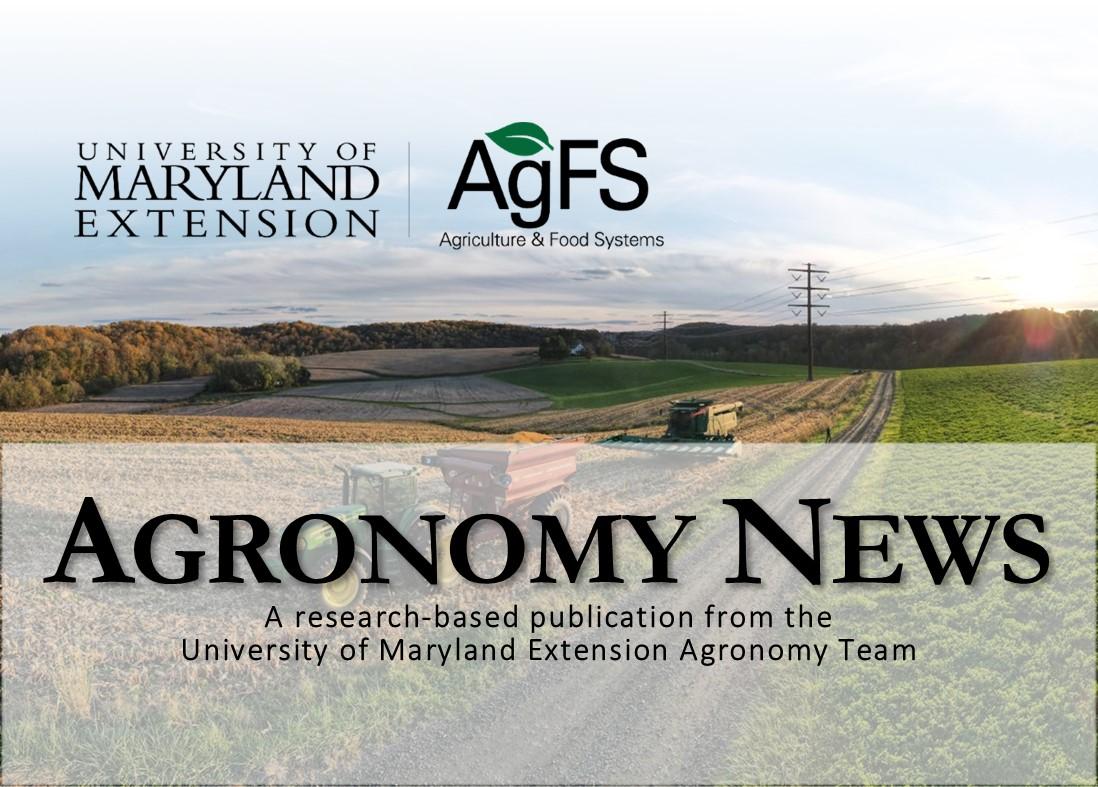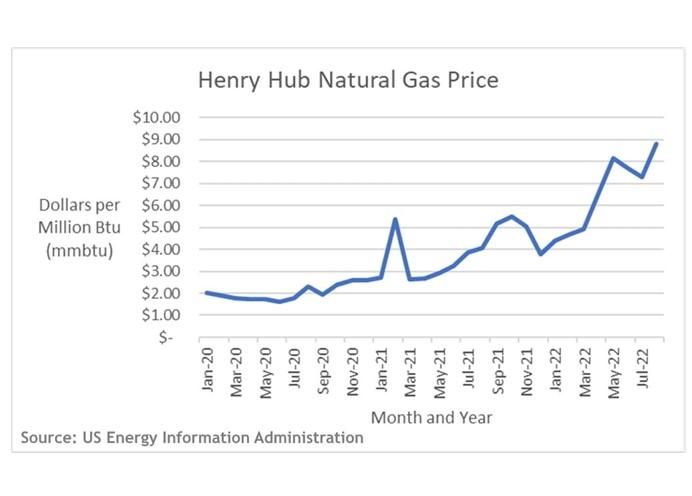
October 2022 | Volume 13, Issue 7

Scouting For Ear and Stalk Rots in Corn
Andrew Kness, Senior Agriculture Agent, University of Maryland Extension, Harford County
With corn harvest underway across the state, growers may be encountering ear rots and stalk rots in affected fields. The degree of severity is dependent on a variety of factors, so it is wise to scout fields prior to harvesting in order to identify problematic fields and give those...Read more about "Scouting for Ear and Stalk Rots in Corn.
Preparing for 2023: Small Grains Disease Management
Alyssa Koehler, Extension Field Crop Pathologist, University of Delaware
Hard to believe it is already October and small grain planting is upon us. Fungal disease pressure in small grains was moderate in 2022. It is hard to predict what in-season disease pressure will look like for 2023, but there are a few management decisions...Read more about "Preparing for 2023: Small Grains Disease Management.

Keep An Eye On Nitrogen Fertilizer Prices
Nate Bruce, Farm Business Management Specialist, University of Delaware
Fertilizer expenses, particularly nitrogen fertilizers, were substantially higher this growing season than in years past. Many different factors were in play such as shortages, logistical problems, and COVID-19. One of the most significant factors...Read more about "Keep An Eye On Nitrogen Fertilizer Prices"
Survey of the Most Common and Troublesome Weeds
Kurt Vollmer, Weed Management Specialist, University of Maryland Extension
The Weed Science Society of America, in conjunction with the regional weed science societies, are conducting a survey of the most common and troublesome weeds in broadleaf crops, fruits, and vegetables. Cropping systems in this survey of interest to Maryland growers include alfalfa, fruit & nuts, pulses, soybean, cole crops, cucurbits, and other vegetables. Participants are asked to list the 5 most common and 5 most troublesome weeds in any of these systems they are comfortable with. Common refers to weeds that are frequently seen, and troublesome refers to weeds that are the most difficult to control, but may not be widespread. The survey can be accessed by going to https://www.surveymonkey.com/r/2022WeedSurvey, and will remain open until October 24. To see results of previous surveys visit https://wssa.net/wssa/weed/surveys/.
Farm Emergency Action Plan
Emily Zobel, Senior Agriculture Agent Associate, University of Maryland Extension, Dorchester County
September is National Preparedness month, which is a good reminder of the importance of preparing for disasters and emergencies that could happen at any time. No matter the size of your farming operation, an emergency action plan (EAP) can help you stay ahead of disasters and protect your farm and those who work on your property. An EAP identifies and organizes people’s responsibilities in preparation for and when responding to a workplace emergency or disaster.
The middle of harvesting season may not be the ideal time for developing an EAP, so instead, I would encourage farmers to pick a time during the winter to sit down with their family and employees and review any EAP in place and develop new ones. Consider having EAP plans for floods, severe snowstorms, fires, and equipment/vehicle incidents.
Below are some questions and items to help with making a farm EAP.
- Where is your emergency contact list?
- If first responders were called, would they be able to find your farm? If not, consider getting signs to mark driveways.
- What is your shelter-in-place plan? What supplies will you need? Where are they stored?
- What is your evacuation route?
- What areas can you use in an emergency for livestock and equipment relocation?
- Would you know what to do if you were the first to discover an injury on the farm?
- Create a farm inventory list including equipment (include serial numbers), animals, people, and supplies (pesticide, seed, fuel, fertilizer, etc.)
- Review current insurance coverage for emergency and disaster situations
Penn State Extension Ready Ag workbook (https://extension.psu.edu/readyag-workbook) can also help farm and ranch owners be better prepared to deal with disasters.

September 2022 Grain Market Report
Dale Johnson, Farm Management Specialist, University of Maryland Extension
Corn
This month’s 2022/23 U.S. corn outlook is for lower supplies, smaller feed and residual use, reduced exports and corn used for ethanol, and tighter ending stocks. Projected beginning stocks for 2022/23 are 5 million bushels lower based on offsetting...Read more about the "September 2022 Grain Market Report.
Grant Opportunities or Upcoming Events
Great resources are just a click away!
Maryland Grain Maryland Agronomy News Blog Nutrient Management University of Maryland Extension Ag Law Initiative Women in Agriculture Plant Diagnostic Lab
Download Agronomy News, October 2022, Vol. 13, Issue 7 (pdf)
Agronomy News is a statewide newsletter for farmers, consultants, researchers, and educators interested in grain and row crop forage production systems. This newsletter is published by the University of Maryland Extension, Agriculture & Food Systems Agronomy Team every month during the growing season and will include topics pertinent to agronomic crop production. The subscription is free.
EDITOR
Andrew Kness
Agriculture Extension Agent University of Maryland Extension
3525 Conowingo Rd., Suite 600
Street, MD 21154
(410) 638-3255
Email: akness@umd.edu